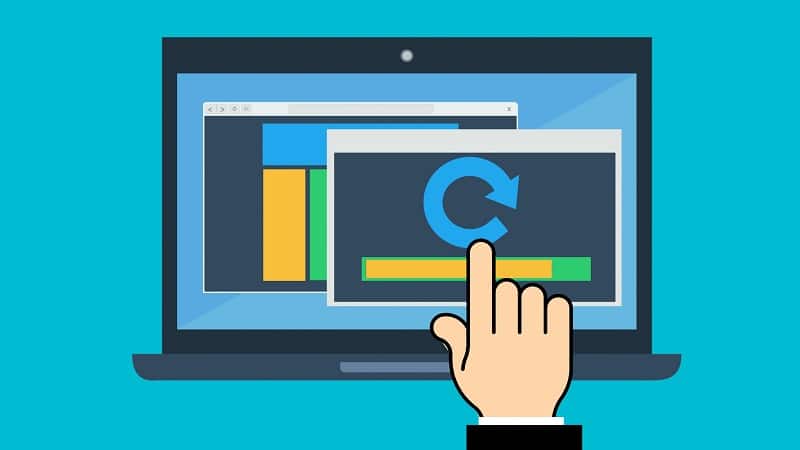10 Ways to Improve Your Website’s Performance

TechsPlace | Building a website might be challenging, but it is crucial for any business online. Nevertheless, this will not mean you should rush through everything. Today, customers have a lot of options, so you must provide them with the most online user experience possible to convince them to purchase. The website’s performance is also among the most crucial elements in this case.
Since poor website speed often leads to poor customer experience, it is crucial to focus on website performance.
It is simple to optimize your website for the best user experience attainable. This post will look at the most effective strategies that may help your site load quicker, so let’s get started.
What is Web Performance?
Web performance and the best practices that go with it are necessary to assure that your website visitors have a positive experience. In some ways, web performance is a subcategory of web accessibility.
If you want your website to run appropriately, you need to consider what kind of device a visitor has and the speed at which they are connected to the internet. Excellent or poor website performance interacts strongly with user experience and the general performance of most websites
10 Ways to Improve Your Website’s Performance
Take these ten guidelines to develop a website that converts, whether your website is entirely up and running or you are still in the design phase.
Choose the Right Hosting Provider
There is a wide range of performance options available from various hosting providers. A web host’s shared plans were typically not comparable to more advanced options like dedicated servers in terms of performance.
Better use a web host that works well around the board. Every hosting company will tell you that they’ll be the strongest, so it’s up to you to compare their features and prices and read as many reviews as you can before you choose one.
Changing web hosting providers might be a hassle, but you can always do it in the future. If you choose the right provider and hosting package, your WordPress will work lightning-fast.
Optimize images
Since images are among the most significant elements of your website’s content, you should manage them to reduce loading speed. On images, three aspects are essential, the size, format, and the src attribute.
Here are the three aspects you should focus on:
Image size
Since an oversized image can slow down page speed, reduce it to an acceptable size. Delete photo comments and reduce picture quality to the minimum acceptable standard.
Format
Although PNG is a better solution, specific older browsers do not support the format. The superior format is JPEG. Avoid making use of any BMPs.
Src attribute
The src attribute provides a URL for locating an image. When the page loads, the browser retrieves the image specified by the URL and inserts it into the page.
Use Social Media
Many website owners understand how to use social media on their business websites efficiently and professionally. Integrating social media with attractive content on your website is the key to leveraging social media as a significant tool for creating revenue.
What makes social media success is interesting content related to your business that customers will be glad to share with their family, friends, and colleagues.
Use Browser Caching
Browser caching is a temporary holding space that enables the browser to refresh content files, such as photos and scripts, to decrease traffic sent over the network.
The use of browser cache has a significant effect on a website’s performance since it may reduce the amount of time significant amount, increase the quality of user experience, and speed up loading times.
You may generate a cache by installing several plugins when working with WordPress.
Reduce HTTP requests
HTTP requests are an essential component in the creation of the web. They make it possible for a web browser to request a server for information and then display it on a website.
Once you access the website, your browser makes an HTTP request to the server, which requests data. The server returns the information your browser requires to show the page, such as HTML, CSS, JavaScript, and photos.
A fast-loading webpage requires fewer HTTP requests between the server and browser.
Optimize page speed
No matter how appealing and engaging your pages are, you will lose visitors if they take too long to load. The website’s bounce rate is the number of individuals who leave after seeing one page, and it has been shown that this rate increases by more than 20% for every five seconds users must wait.
Since the time it takes for a page to load is an integral part of the user experience, Google considers it when ranking your site. You can see how long it takes Google to load your page by running a LightHouse review to find any problems that need to be fixed.
Large images can slow down your pages. Reduce file sizes without losing quality by using a tool like image editing software.
Improve SEO (Search Engine Optimization)
SEO refers to the techniques available for improving your website’s rating on Google and other search engines. From the text to graphics and metadata, nearly every feature on a website can improve for SEO.
Suppose you choose to manage SEO yourself or hire a professional. In that case, it’s crucial to test and edit your pages daily since Google’s algorithms change over time and search behaviours keep growing.
Your pages should deliver what people seek to rank. Keyword research shows users which term to target with related sites. Analyze your website’s traffic to discover what visitors are searching for.
Make your website mobile-friendly
With more than half of the global online traffic now coming from mobile devices, there is no longer an alternative to having a mobile-friendly website; it is now a must. Since then, Google has prioritized mobile-friendly websites in its search results, making this a crucial factor for SEO.
However, businesses still have web pages not optimized for mobile users, which can be annoying and prompt users to look. Outdated sites which haven’t been updated are particularly vulnerable to this.
Make it appealing to the eye
Providing a solid first impression is particularly important for websites since looks may be just as significant as content. Keep your design minimal and use flyer designing software such as Adobe Photoshop or Adobe Illustrator to enhance it. Moreover, use only a few complementary colours and fonts that work well together and represent your brand to focus on the user experience.
Additionally, user-friendly websites employ a lot of white space to split up the material and make it simpler to understand. It helps to direct the viewer’s interest to how you want it on the page.
Update your website regularly
When your website is running, it should not be abandoned. It’s important to keep your website’s content fresh, but you should also focus on expanding it so that you have more pages and new content to contribute to SEO and keep visitors coming back.
Posting a blog is the simplest way to grow your website, but publishing content regularly requires effort and attention. The more updates you make for your blog site, the more traffic you will get. So it may be worth researching ideas and studying what other businesses are doing.
Final Thoughts
With all these helpful tips for improving your website, you can make it work as well as possible. As a result, visitors will come back again and again, which will increase customer engagement and customer loyalty and boost sales.
Moreover, by making your website better for users, these changes will help your business rise to prominence on search engine results pages.
Paul Meñez was a freelance interior designer turned graphic artist and audio-video editor. He went into full-time NGO work for more than ten years and found his passion for outreach work, specifically for underprivileged children and youth. He has travelled around the Philippines and Asia on different outreach efforts, even with his wife and three kids. He is currently based in the Philippines, doing freelance graphic design and video editing while writing for Softvire. He is also preparing to jumpstart his organic farm on his hometown island soon.





